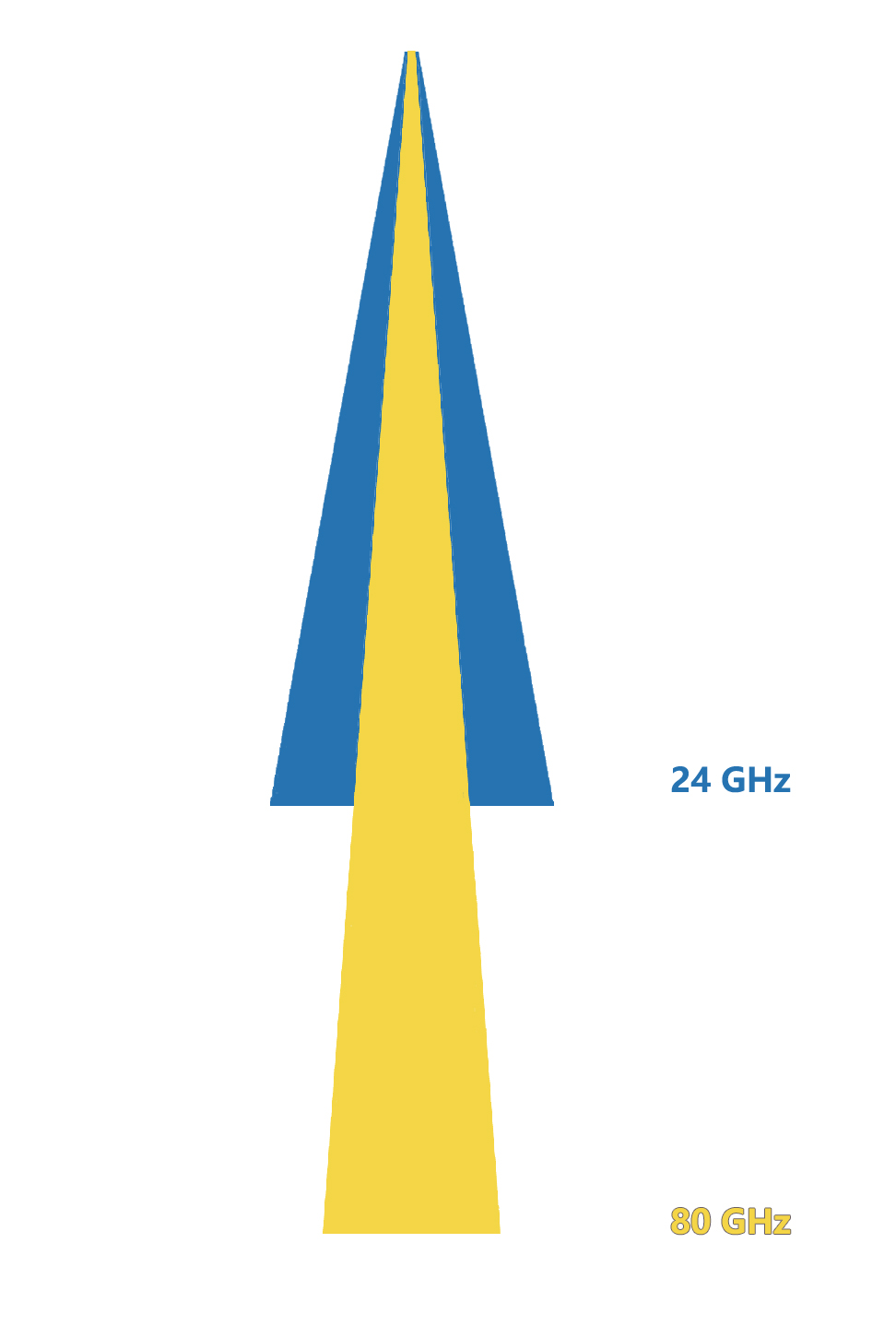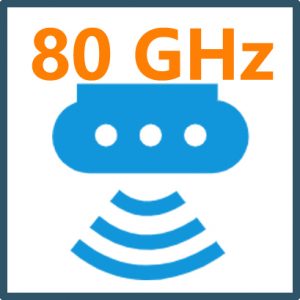What is 80 GHz Radar Level Measurement?
Commercial radar sensors mainly include millimeter wave radars in the frequency bands of 24GHz and 80GHz. The 24GHz millimeter wave radar mainly operates in the frequency range of 24.05-24.25 GHz, with a bandwidth of 200 MHz, and is mainly used for short range measurements.
The 80GHz millimeter wave radar mainly operates in the 76-81GHz frequency range, with a bandwidth of 1 GHz, and is mainly used for medium to long distance measurements. The higher operating frequency and up to 1 GHz operating bandwidth of the 80 GHz millimeter wave radar significantly improve its resolution and accuracy in speed and distance measurement compared to the 24 GHz millimeter wave radar with only a 200 MHz operating bandwidth. In addition, the easier to integrate process dimensions are gradually replacing 24 GHz millimeter wave radar with 77 GHz millimeter wave radar as the millimeter wave radar sensor for industrial measurement.
Compared to 24GHz millimeter wave radar, 80GHz millimeter wave radar has irreplaceable advantages.

Firstly, the detection accuracy of 80GHz millimeter wave radar is better. 24GHz electromagnetic waves have longer wavelengths and diffraction capabilities, but this can lead to poor directionality, affect the judgment of target position, and even result in directionality errors, which can affect accuracy. The wavelength of 80GHz radar is smaller, and although its diffraction ability is weaker than that of 24GHz radar, its detection accuracy is higher. Therefore, in the future, 80GHz millimeter wave radar will undoubtedly have certain advantages for industrial measurement and autonomous driving that strive for improved detection accuracy.
In addition, the detection range of the 80GHz millimeter wave radar is even longer. Although theoretically speaking, the wavelength of 24GHz is longer, it belongs to the internationally recognized ISM frequency band and is not exclusive to automotive applications. To avoid interference, the application of 24GHz millimeter wave radar in automobiles requires certain power limitations. In the 77GHz frequency band specifically designed for automotive applications, higher power can be used to achieve longer detection distances. At the same time, the 80GHz millimeter wave radar meets the requirements of high transmission power and wide operating bandwidth, which can achieve both long-distance detection and high range resolution.
Secondly, the volume of the 80GHz millimeter wave radar is smaller. Due to the lower frequency and longer wavelength of the 24GHz radar, the antenna required for the radar is longer, making it more difficult to make a small-sized radar. Therefore, the 24GHz millimeter wave radar will have a larger volume than the 80GHz millimeter wave radar, which is a key issue in pursuing aesthetic and lightweight industrial measurement and vehicle volume.

